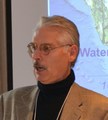ARTICLE: Sustainable Watershed Systems, through Asset Management – Embed ‘state of art’ hydrology in engineering ‘standard practice’ (Asset Management BC Newsletter, Summer 2017)

The Partnership for Water Sustainability provides a type of engagement and outreach with local government that provincial staff no longer provide. Collaboration with participating local governments creates sharing and cross-pollinating opportunities that help eliminate the ‘disconnect between information and implementation’,” wrote Kim Stephens. “A desired outcome is that land use and infrastructure practitioners would understand how natural systems support municipal services.”










